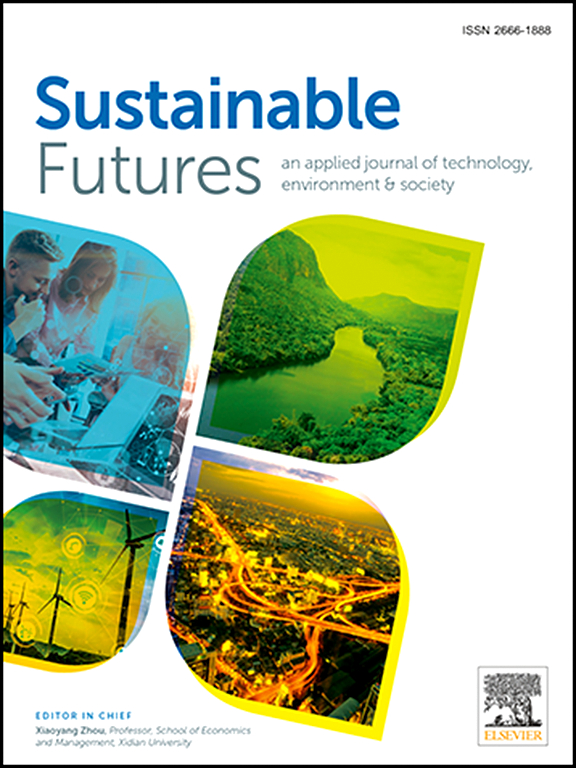迈向可持续能源的未来:将可再生能源的高度渗透纳入能源系统的多目标政策框架
IF 4.9
2区 社会学
Q2 ENVIRONMENTAL SCIENCES
引用次数: 0
摘要
整合可再生能源对应对气候变化、环境问题和可持续发展需求至关重要。随着对清洁能源需求的增加,创新方法对于提高能源系统的效率和灵活性至关重要。本文提出了提高系统灵活性和降低成本的先进技术,包括可再生能源的经济互补性、部门耦合和清洁技术,如绿色海水淡化、电制气(P2G)和热回收解决方案。此外,本文还探讨了私人投资者在混合可再生能源整合中的作用。在这种情况下,私人投资者给决策者带来了新的挑战,他们必须在吸引投资者与激励政策之间取得平衡,并使总系统成本最小化。针对这一问题,提出了一种混合整数非线性数学模型,利用Pareto Front决策方法求解多目标问题。仿真结果表明,政策制定者选择合适的上网电价,并基于经济互补性对私人投资者进行投资许可的战略性分配,可使能源系统规划成本每年降低1亿美元以上。此外,研究结果表明,对该行业的投资可以减少高达250万吨的二氧化碳排放,并直接或间接创造多达3400个就业岗位。这些发现为改善能源政策和与可持续发展目标保持一致提供了实际意义。本文章由计算机程序翻译,如有差异,请以英文原文为准。
Towards sustainable energy futures: multi-objective policy framework for integrating high penetration of renewable energy sources into energy systems
Integrating renewable energy is crucial for addressing climate change, environmental issues, and the need for sustainable development. As the demand for cleaner energy increases, innovative approaches are essential to enhance the efficiency and flexibility of energy systems. This paper proposes advanced techniques to increase system flexibility and cut costs, including the economic complementarity of renewable energy sources, sector coupling, and clean technologies such as green desalination, power-to-gas (P2G), and heat recovery solutions. Furthermore, this paper explores the role of private investors in hybrid renewable energy integration. In this context, private investors present new challenges for policymakers, who must balance attracting investors with incentive policies and minimizing total system costs. To handle this, a mixed-integer nonlinear mathematical model is proposed, utilizing the Pareto Front decision-making approach to solve the multi-objective problem. The simulation results reveal that by choosing an appropriate feed-in tariff (FIT) rate and strategically allocating investment permissions to private investors based on economic complementarity, policymakers can lower energy system planning costs by over 100 million USD per year. In addition, the results prove that investments in this sector can reduce CO2 emissions by up to 2.5 million tons and create up to 3400 jobs directly and indirectly. These findings offer practical implications for improving energy policy and aligning with sustainable development goals.
求助全文
通过发布文献求助,成功后即可免费获取论文全文。
去求助
来源期刊

Sustainable Futures
Social Sciences-Sociology and Political Science
CiteScore
9.30
自引率
1.80%
发文量
34
审稿时长
71 days
期刊介绍:
Sustainable Futures: is a journal focused on the intersection of sustainability, environment and technology from various disciplines in social sciences, and their larger implications for corporation, government, education institutions, regions and society both at present and in the future. It provides an advanced platform for studies related to sustainability and sustainable development in society, economics, environment, and culture. The scope of the journal is broad and encourages interdisciplinary research, as well as welcoming theoretical and practical research from all methodological approaches.
 求助内容:
求助内容: 应助结果提醒方式:
应助结果提醒方式:


